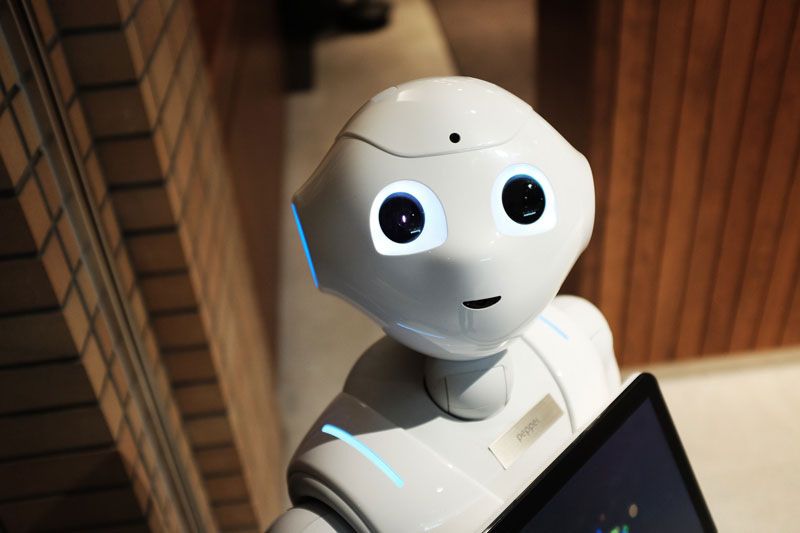AI is Helping Change the Landscape of Cyber Attacks and Prevention
by Daniel William Carter, Content Director and a Cyber Security Director, IDStrong
Artificial Intelligence is both a blessing and a curse.
Most of the modern industries, such as the medical and automotive sectors, rely on AI for continuing research and development. Governments and companies use AI-powered facial recognition technology for verifying identities. Smartphones use AI to take better photos or give more accurate map data.
Even the entertainment industry relies heavily on AI for special effects. Studios can create realistic new worlds or de-age older actors to play younger versions of themselves. AI technology has a plethora of applications that can benefit humanity but can also be devastating when it falls into the wrong hands. The dual nature of AI technology draws the flak of many international observers, especially when engineered to cause havoc on a global scale.
Weaponizing Artificial Intelligence
The most pressing concern about the duality of Artificial Intelligence is that cybercriminals also get to enjoy the benefits of each technological leap. Hackers can use AI and deep learning to breach a target system, the same tools used by security teams to detect suspicious behavior. A Deepfake is a video or audio of one person’s face or voice superimposed over another.
Experts believe that Deepfakes and other advanced AI tools will play a significant role in cybercrime, including identity theft and social engineering. All the more reason why you should Monitor Your Identity service to help mitigate the risks of data exposure. One of the most high-profile cases of a Deepfake gone rogue was when criminals used AI technology to replicate a CEO’s voice. The bad guys were able to steal an estimated $243,000 by impersonating the CEO and authorizing the cash transfer.
The scam targeted the head of a UK-based energy firm. The attackers duped him over the phone by pretending to be his boss, the CEO of the firm’s parent company based in Germany. The Deepfake-assisted cybercriminals created a near-perfect clone of the German boss’ voice, which told the UK executive to wire the money ASAP. The money ended up in a bogus Hungarian supplier’s account an hour later.
IoT as an Entry Point For Criminals
The Deepfake theft proves the potential of AI to cause widespread criminal activity on a scale never seen before. By leveraging the power of Artificial Intelligence, threat actors can refine how they launch attacks. Driverless cars, for instance, have been proven to be susceptible to hacking. The growing number and widespread adoption of IoT devices is a potential gold mine for hackers.
The lines between corporate IT and operational IT are continuing to blur. Pretty soon, cybercriminals will be able to control cooling systems and conveyor belts in a production facility or even the pump at a gas station. Any online IoT device that has little to no security becomes a target or an entry point into a network that hackers can use to steal data. Cybercriminals can also use these systems as botnets for distributed denial-of-service (DDOS) attacks.
Attacks on critical infrastructure may also become a regular occurrence, and these can lead to power interruptions that grind a significant city to a halt for days to weeks. Rogue nations like North Korea have cyber warfare capabilities used for data theft and sabotage. The United Nations estimates that the country’s hackers made $2 billion by using sophisticated attacks on governments and corporations.
According to a report by Juniper Research Group, the price tag of security breaches will skyrocket from $3 trillion each year to more than $5 trillion in 2024, an 11% annual growth rate.
Fighting Fire with Fire
The world needs AI-based defenses to fight AI-based attacks. AI can improve its capabilities over time – it’s designed that way. It can change digital signatures and parameters automatically in response to what it’s up against. The only way to win a war against a machine is to use another machine.
Going back to the nature of AI, every phase of evolution that benefits the cybercriminals also help the world’s security response to it. As the world braces for more AI-driven breakthroughs such as early cancer detection in the medical sector or eliminating human error with driverless cars, we should also expect more sophisticated attacks from bad actors.
About the Author
Daniel William is a Cyber Security Expert. His great passion is to maintain the safety of the organization’s online systems and networks.
He knows that both individuals and businesses face the constant challenge of cyber threats. Identifying and preventing these attacks is a priority for Daniel.
You can reach Daniel at LINKEDIN.


